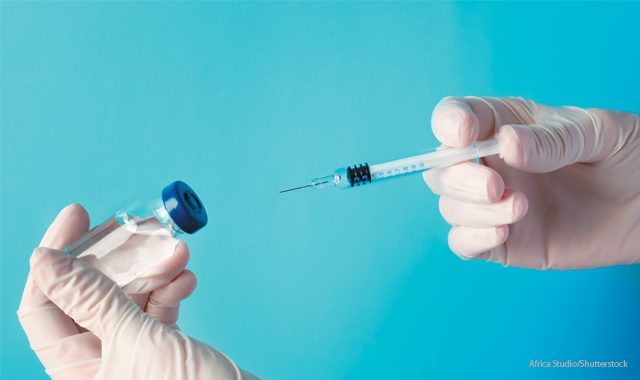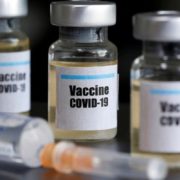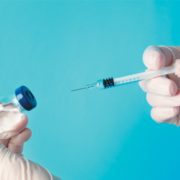Since the start of the pandemic, we have heard that a vaccine could be available in 12 to 18 months. The most optimistic even suggest a delay of six months, that is to say in the fall. But the fact that a vaccine is “ready” is not the end of the story, notes the Rumor Detector.
Facts to remember:
– We must first find the right formula
– We must test this recipe
– We must produce the vaccine on a very large scale
– We can short-circuit certain steps, but it takes time
First, find the right formula
Pharmaceutical manufacturers, biotechnology innovators and other university labs are competing to develop a COVID-19 vaccine. The World Health Organization (WHO) listed, on May 15, 110 vaccines in development, including eight in clinical trials. The London School of Hygiene & Tropical Medicine , for its part, counted 169 vaccine projects, including 12 at the trial stage.
The proliferation of projects and approaches is good news, but it does not guarantee that an effective vaccine will be found. Traditionally, only a small minority of the vaccines and drugs tested have resulted in marketing.
In addition, achieving this within the year would be a precedent since, historically, the most rapidly developed vaccine, that against mumps, took four years to go from the collection of viral samples to approval in 1967. In In 2015, a speed record was established during the Zika epidemic, when it had taken seven months to develop an acceptable vaccine candidate to advance to the stage of clinical trials. However, these never took place since the epidemic resolved itself.
Then t ester recipe
Candidates for a possible vaccine are first tested on human cells, then in animals. If their efficacy and safety are encouraging, they move on to the stage of clinical trials in humans. These trials take place in three phases, in increasingly large groups of volunteers. They aim to assess the safety of the vaccine, the dose offering the best immune response, its side effects and then its effectiveness. They usually take 4 to 8 years. In the case of SARS-CoV-2, the trials in progress should not be completed before the end of the year, or even in the spring or summer of 2021. It will also be necessary to allow time for security checks and approval by the authorities of each country.
There is always the possibility of skipping stages. For example, by letting vaccine manufacturers abandon certain animal studies or by doing them in parallel with the first human trials. Some experts suggest infecting vaccinated volunteers: this type of trial gives the quickest answer to a number of questions, but involves ethical issues. Despite this, more than 24,000 people from 102 countries have signed an online petition to volunteer.
Finally, produce it
Designing a vaccine in record time is one thing. But you still have to be able to manufacture and distribute billions of specially packaged doses transported at temperatures below 0ºC in almost all corners of the world.
In theory, existing factories could certainly produce hundreds of millions of doses by the end of the year, if the recipe was established. In fact, several laboratories and pharmaceutical companies have announced that they are ready to produce these millions of doses, even if their vaccine has not yet proven to be effective.
But since almost everyone on the planet needs to be vaccinated, existing facilities may be insufficient. Especially that we will have to continue the manufacture of vaccines against influenza, measles, mumps and other infections. In addition, the compulsory distance in factories is already reducing production capacity.
As a result, new factories may be required, which will inevitably cause delays.
The production facilities required will also depend on the type of vaccine that will work best. If it is a vaccine made from the virus or a virus protein, it should be easier to estimate the time required, since industrial technology has existed since the 1950s. However, it takes time . For example, the flu vaccine is produced by growing the virus in millions of chicken eggs and each cycle takes several months.
In the case of an RNA or DNA vaccine, which involves injecting the basic genetic material of the virus into human cells so that they build the necessary protein, production should be faster since the process is standardized. It may also need to be grown in cell tanks or in plants, such as tobacco plants. However, these types of vaccines have never been tested on a large scale.
For a gene-based vaccine, which uses a non-pathogenic virus (which does not cause disease), production is slower because it involves the cultivation of animal cells. However, it benefits from standardized industrial processes, which facilitates the production of large quantities.
Risks of shortage
Other elements of the process can create bottlenecks . Vaccines that are made up of a SARS-CoV-2 protein, or a fragment of it, often need an adjuvant – an added molecule to boost the immune response. These adjuvants may require ingredients that may become scarce.
Distribution could also be slowed by a shortage of medical glass, used to make vaccine vials, such as that hitting the United States. As for the caps of these bottles, they are only manufactured by a handful of companies, which increases the risk of stock shortage.
2 billion for a vaccine
It takes a lot of money to develop a vaccine. At least US $ 2 billion , according to the Coalition for Epidemic Preparedness Innovations (CEPI), an international alliance that funds the development of vaccines against epidemics. This estimate includes the development of three candidate vaccines and their manufacture, but excludes manufacturing and delivery costs.
Of this amount, $ 690 million has been pledged to CEPI by various national governments. The US government has donated nearly $ 1 billion to support the development of experimental vaccines from Moderna Therapeutics and Johnson & Johnson. And on May 21, the White House announced a $ 1.2 billion grant for a vaccine under development at AstraZeneca, stating that the “delivery” of the first vaccines should take place in October. A largely improbable timetable which brings us one month from the November presidential election.
Verdict
Vaccines to prevent COVID-19 infection are developing at unprecedented rates, but it is unrealistic that some may be available as early as the fall. Even if a vaccine was shown to be hyper-effective in ongoing phase one or two clinical trials, it would still take several months before large-scale production and the start of the vaccination campaign.











